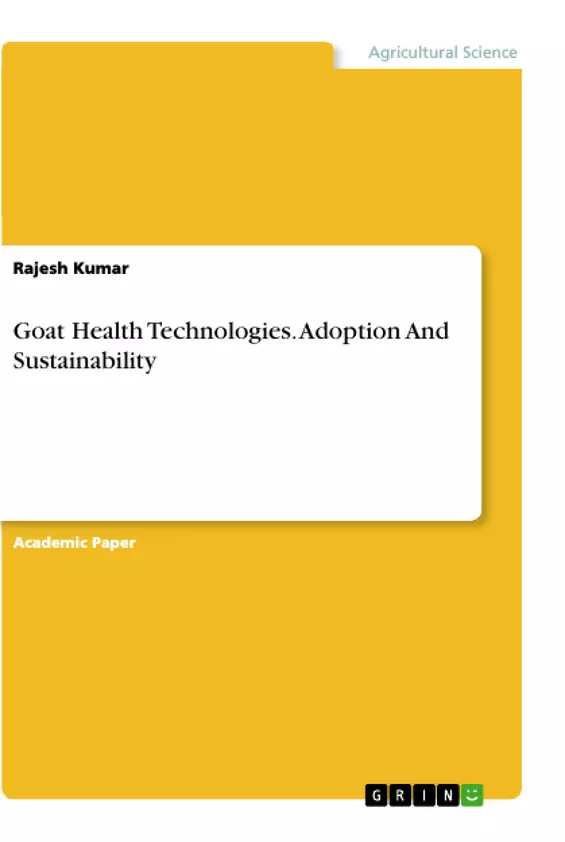The broad objective of the study was to find out the extent of adoption and sustainability of selected goat health technologies at farmer’s level. The present study was conducted in purposively selected six districts from all the three agro-climatic zones of Bihar. All the three zones were selected for the study. Two districts were selected from each zone on the basis of highest density of goat population. From each selected district, two blocks were selected randomly to make a total of 12 blocks and from each block two villages were selected randomly, to make a total of 24 villages. The respondents who owned at least 5 goats were selected randomly in a way to make a sample size of 240. From each zone 20 faecal samples were also collected randomly for the parasitic load identification in goats. Data were collected through personal interview schedule incorporating all relevant dimensions. Interaction dialogue, secondary sources as well as observations were the other techniques of data collection. Majority of the farmers were middle aged, with medium level of goat farming experience, had not taken any kind of training related to goat farming characterised by low level of social participation, poor and socially disadvantaged groups had medium extension agency contact. Chi-square analysis showed the non significant relation between independent variables and categories of zones. Majorities of the farmers had small flock size, were landless farmers, were in medium income category and had medium knowledge level.
Inhaltsverzeichnis (Table of Contents)
- Introduction
- Research Methodology
- RESULTS & DISCUSSION
- CONCLUSIONS
- Implications and Recommendations
- Suggested areas for future research
Zielsetzung und Themenschwerpunkte (Objectives and Key Themes)
The main objective of this work is to explore the adoption and sustainability of goat health technologies in India. The text focuses on the critical role of the livestock sector, particularly goat husbandry, in the Indian economy, particularly for rural communities.
- The importance of livestock, especially goats, in the Indian agricultural economy and its contribution to rural livelihoods.
- The potential for goat production to address food security, employment generation, and poverty reduction in rural areas.
- The challenges and opportunities related to the adoption and sustainability of goat health technologies.
- The role of government policies and initiatives in promoting goat production and improving goat health.
- The impact of goat husbandry on the socio-economic development of rural India.
Zusammenfassung der Kapitel (Chapter Summaries)
- Introduction: This chapter establishes the context and importance of livestock, particularly goats, in the Indian agricultural economy. It highlights the significance of the sector in rural livelihoods, poverty alleviation, and food security.
- Research Methodology: This section provides a detailed description of the research methods employed in the study. It outlines the data collection techniques, sample size, and statistical analyses used to investigate the adoption and sustainability of goat health technologies.
- RESULTS & DISCUSSION: This chapter presents and analyzes the key findings of the research, highlighting the factors that influence the adoption and sustainability of goat health technologies in India. It discusses the effectiveness of different interventions and their impact on goat health and productivity.
Schlüsselwörter (Keywords)
The key terms and concepts discussed in this work include: goat health technologies, adoption, sustainability, livestock, agriculture, rural economy, food security, poverty alleviation, employment generation, socio-economic development, India.
- Quote paper
- Rajesh Kumar (Author), 2021, Goat Health Technologies. Adoption And Sustainability, Munich, GRIN Verlag, https://www.hausarbeiten.de/document/1150160


